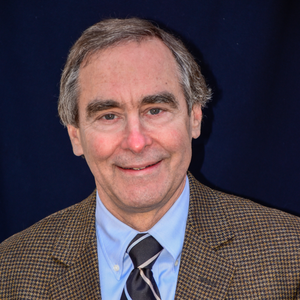
In 2018, an 82-year-old woman experienced mild pain after eye surgery, so her ophthalmologist applied some ointment to ease her discomfort. Instead of throwing away the tube of medication as hospital policy required, he handed it to her to take home. He wanted to save her a trip to the pharmacy and the extra expense for the medication. She was poor and frail, and it was 10 degrees below zero outside. It was the right choice for the patient, but the ophthalmologist was reported for violating hospital policy.
It wasn’t the first time a hospital cited a physician for giving a patient partially used medication to take home, but it was the last time ophthalmologist David J. Palmer, MD, chose to accept it. Dr. Palmer went to the Illinois Society of Eye Physicians & Surgeons and the Chicago and Illinois State Medical Societies with a draft resolution to bring to the state legislature of Illinois.
The bill would allow patients to take home topically applied medications from surgery if needed for post-op care. In July 2021, three years after Dr. Palmer’s colleague was cited, the bill became law in the state of Illinois by a unanimous vote.
Healthcare’s Huge Carbon Footprint
The benefits of this law extend beyond an improvement in patient care and reduced costs for patients, it also raised awareness of the huge financial and environmental costs of unused pharmaceutical products tossed in the garbage after surgery.
A 2019 study found that about two-thirds of topical eyedrops and ointments used during cataract surgery were discarded after a single use. At a cost of about $150 per surgery, that’s equivalent to approximately $560 million in wasted medicine every year. The authors estimated that this drug waste generated 23,000 to 105,000 metric tons of unnecessary CO2 emissions annually in the U.S., a quantity equivalent to driving a car from Anchorage, Alaska, to Miami, Florida, 4,600 to 51,400 times every year.
Drug waste is not only needlessly emitting more carbon dioxide into the air, but it’s also likely seeping into ground water. In addition, drug waste increases the potential for periodic drug shortages, which have plagued ophthalmologists of late.
We Need More Member Advocacy!
Because states regulate how hospitals and surgery facilities deal with drugs used during surgery, this issue must be addressed state by state. That’s why the Academy created a legislative template based on the Illinois law to assist ophthalmologists and other interested individuals to develop legislative efforts in their states.
“You will be well prepared to draft a resolution if you use this template based on the Illinois law,” Dr. Palmer said. “Then go directly to your state eye society and state medical society, they have lobbyists and connections in your state legislature. It requires, patience, persistence, and optimism. But it can be done.”
We Have a Communication Problem
Some of the drug waste problem can be addressed by clearing up confusion over what constitutes the safe and responsible use of topical medications used during surgery. It’s common for eyedrops in multidose containers or tubes of ointment to be used on one patient and then tossed in the garbage, partly because physicians think this is what a tangle of regulatory agencies want them to do.
To clarify the issue, a task force representing the Academy and three other ophthalmology groups (The American Society of Cataract and Refractive Surgery, the American Glaucoma Society, and The Outpatient Ophthalmic Surgery Society) reviewed published studies and had discussions with multiple regulatory and accrediting organizations. Based on their investigation, the task force this month issued recommendations on how to reduce drug waste while keeping patient safety paramount. They concluded that:
- Topical drugs in multidose containers can be used on multiple patients in surgical facilities if proper guidelines are followed.
- Topical drugs in multidose containers can be used until the manufacturer’s labelled date of expiration if proper guidelines are followed.
- Topical, partially used operating room medications should be allowed home with patients if needed for care.
Ophthalmology’s Unique Opportunity
Ophthalmologists are also tackling unnecessary waste in ophthalmic surgery. Health care generates about 9 percent of total greenhouse gas emissions in the United States and is the second largest source of landfill trash. Operating rooms contribute up to 30 percent of a hospital’s waste. Because cataract surgery is the most performed medical procedure worldwide, ophthalmology has an opportunity to reduce medicine’s big carbon footprint.
Another focus of this multi-society task force is addressing prohibitions against the reuse of many potentially multiuse products that are thrown out after every ophthalmic procedure.
One Person Can Make a Difference
Can one person make any sort of meaningful difference in the fight against climate change? Dr. Palmer’s example proves that you are far more powerful thank you think, so act accordingly.